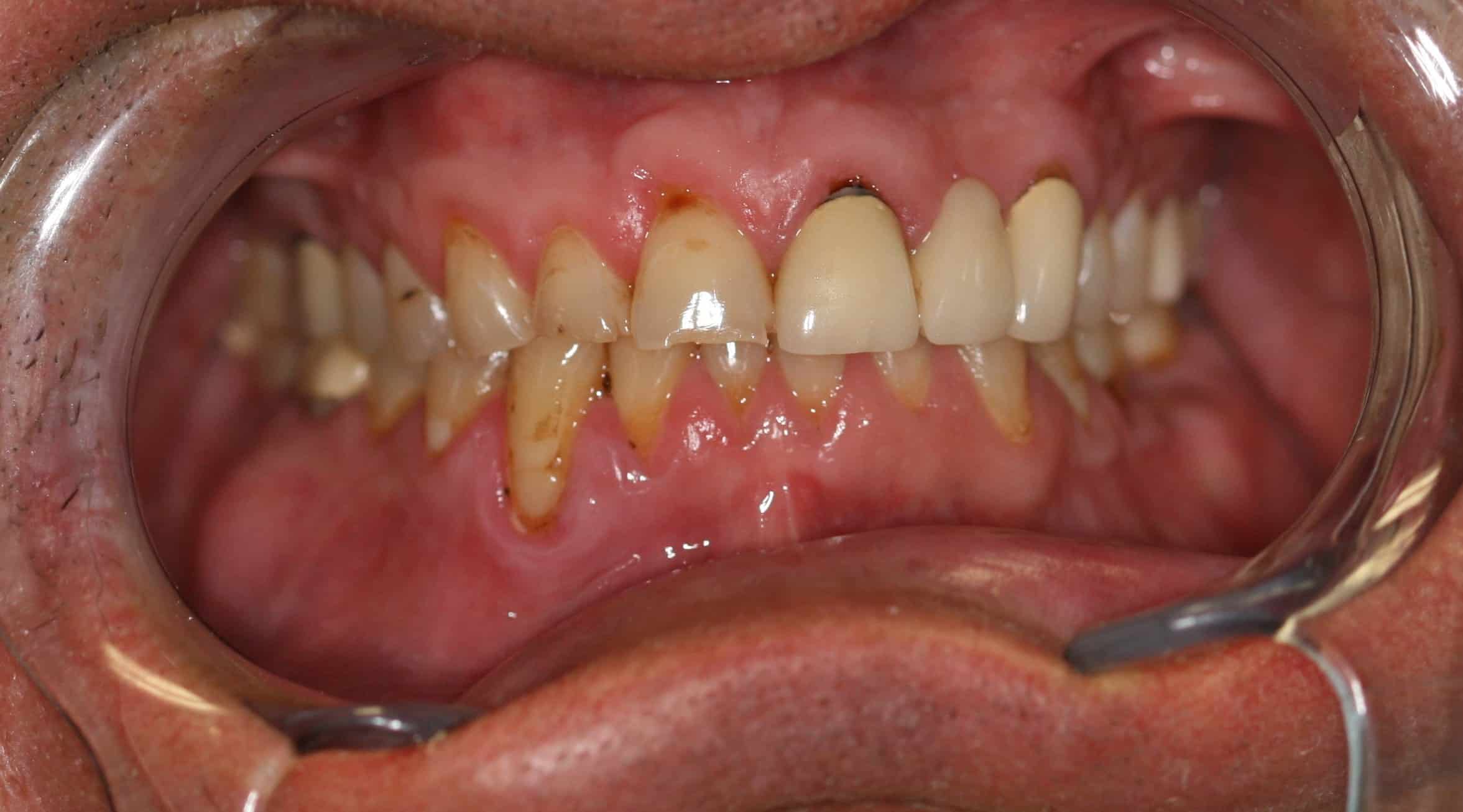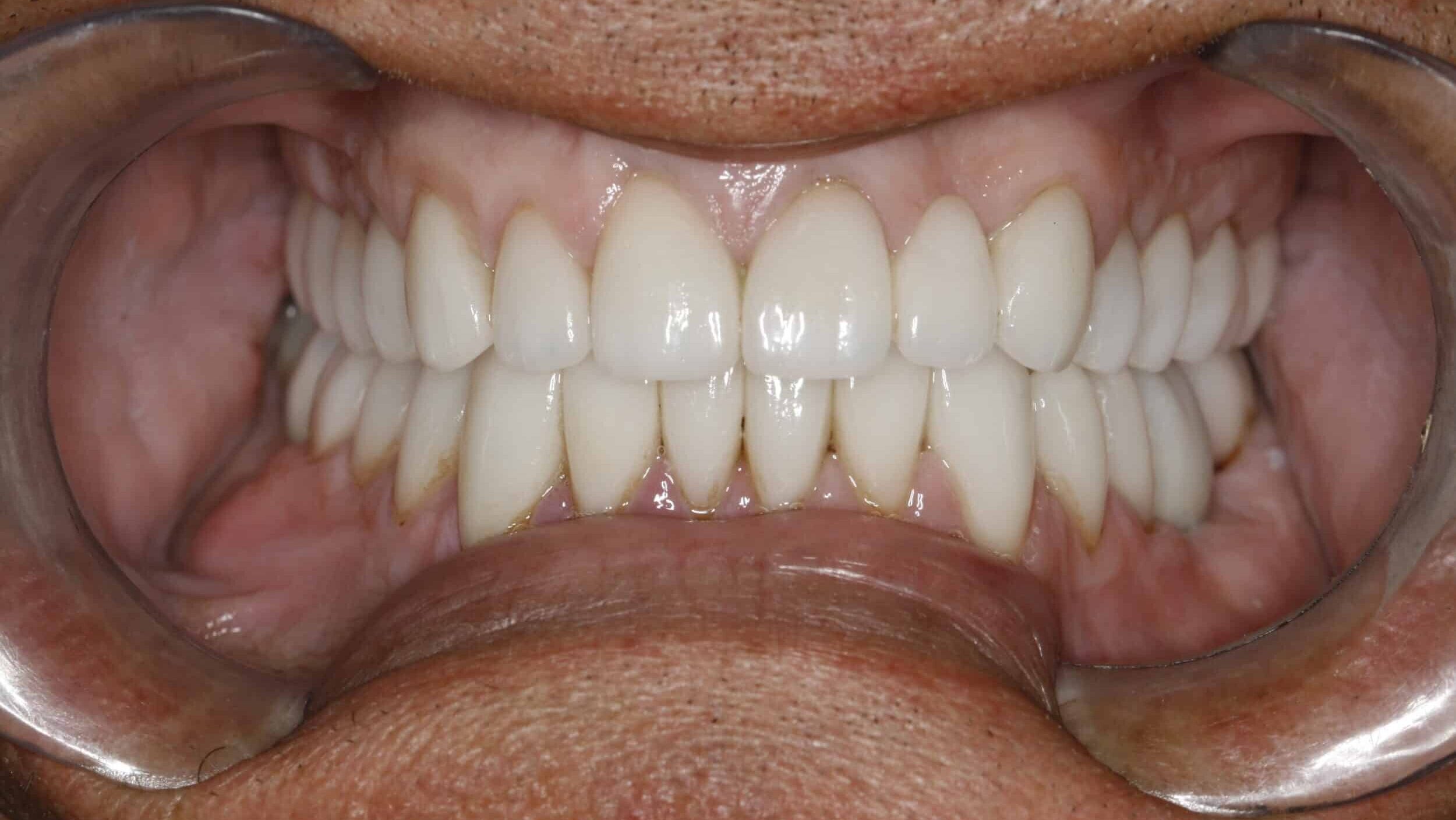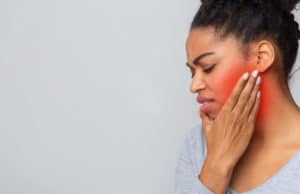What is Overbite / Underbite?
Overbite refers to a bite position in which the upper row of teeth overlaps the bottom. Underbite is the opposite, with the lower arch jutting out farther than the upper. Both types of malocclusion can detract from the appearance of the smile. Both can also increase risks for uneven tooth wear and jaw irregularities – some of which may contribute to TMJ.

If you have an overbite or an underbite and would like to learn about treatment options that can restore both function and appearance, please call the Koing Center for Cosmetic & Comprehensive Dentistry at 713-668-2289 to schedule a consultation today. Located in Houston, Dr. Ronald Konig welcomes patients from The Woodlands, Katy, Sugar Land, Pearland, and all surrounding Texas communities.
Read Blog: Non-Surgical Overbite Correction In Dental Office: Change Your Lower Jaw
Before and After Photos
Case 1- Overbite

Before

After
Case 2 - Underbite

Before : Serious unhealthy underbite

After: Underbite correction, healthy smile and bite and no TMJ pain


In addition to not looking attractive, causing damage to the existing teeth, and often causing facial asymmetry, underbites are most often damaging to the gums and teeth, causing wear and often TMJ pain. This is a case where our patient was offered only the options of surgery to correct her underbite. She was not happy with the appearance and even tried an unsuccessful attempt with Invisalign to correct this issues. She also felt it was getting worse with time.
What Can Cause an Overbite or Underbite?
The causes of overbites and underbites are varied, often involving a combination of genetic and environmental factors:
- Genetics: Jaw structure is mainly hereditary, meaning the size and shape of your jawbones can predispose you to overbites or underbites.
- Childhood Habits: Prolonged habits such as thumb-sucking, excessive pacifier use, and prolonged bottle feeding can influence jaw development and lead to malocclusions.
- Poor Oral Habits: Tongue thrusting and improper chewing habits can also contribute to developing these conditions.
- Trauma: Accidents affecting the jaw can misalign the bite, leading to an overbite or underbite.
- Dr. Konig assesses the specific causes in each case to tailor the most effective treatment plan.
What are the advantages of non-surgical jaw alignment treatments?
Before the function of the jaw was better understood, the first option for treating jaw alignment problems, beyond dramatic orthodontics such as headgear, was often orthognathic jaw surgery. This surgery involves plates, screws, and wires and makes quite an impact on the patient’s life.
Dr. Konig believes there is rarely a need to use surgery to correct these conditions. Underbites respond well to orthodontic treatments like Invisalign and Controlled Arch Orthodontics. Cosmetic dentistry procedures such as crowns and porcelain veneers are effective for many patients. Overbites can be treated with the same tools. Overbites also often involve TMJ problems, so Dr. Konig works to get the jaw in the proper alignment.
Generally, these non-surgical treatments can work just as well, without any of the trauma and recovery dictated by jaw surgery.
Non- Invasive Bite Correction
When patient’s need bite correction, very often there are problems ranging from TMJ pain, weak chins, or facial symmetry issues. Some of these are related to overbites. An overbite can be corrected without major jaw surgery
When a patient needs bite correction they usually have a multitude of problems directly related to discomfort, premature aging, and self-esteem with jawline issues. With the Face Lift Dentistry® method, bite correction has advanced to a level that gets cosmetic results that are so good that it is “hard to believe”.
Patients can experience a younger shape to their faces; get a better chin position and an improved facial profile. The essence of this method is to support the face with the teeth and optimizing the jaw position to the patient’s natural facial anatomy with bite correction that is non-invasive and is completed quickly. The patient’s self-confidence can reach a new level.


Health Benefits of Bite Correction
The benefits to the patient’s health are as follows: It relieves TMJ pain, neck pain, jaw tension, sleeping problems, improves the airway and reduces the tension in the jaw, head and neck. Patients wake up more alert and with more energy. These patients look so much better that they “shock themselves” when they look in the mirror. The miracle of this method is that none of your healthy teeth are ground down with the dental drill and jaw surgery is eliminated. Patients can get their bite corrected without pain and without needing anesthetic or a shot in a very short period of time.
What are Some Benefits of Bite Correction
When patient’s have bite issues, they very often have TMJ pain, facial changes such as premature aging, feeling of sunken face, and sometimes facial asymmetry.
Dr. Konig explains, “Non-surgical overbite correction can lead to increased comfort, more youthful faces, and in many cases improved airway and sleep”.
An added benefit is a beautiful smile. Dr. Konig uses special methods to find the correct physiologic bite or jaw position with respect to one’s facial muscles, jaw position, and many times cervical as well. A test drive bite is utilized to ensure that patients are comfortable, stable, and also to allow proper healing in cases with degenerative jaw joint issues (TMJ treatment).
He emphasizes that it is important to look at the entire picture and not just the teeth. This helps to obtain long term health. Simply doing porcelain veneers alone will not change the facial proportions.
If you have questions regarding bite correction or non-surgical overbite correction, non-surgical facelifts, please contact our office, Ronald W. Konig DDS, FAGD, LVIF, FIAPA, 713-668-2289.
Are there risks with non-surgical jaw treatment?
These dental and orthodontic procedures are without risk for the most part. If more involved restorations, such as placement of dental implants, are used, there is a slight risk of infection, but that’s about it. These are safe, effective procedures.
The Effects of an Overbite
What are the different types of non-surgical jaw treatments?
Invisalign
Invisalign is an alternative to traditional metal braces. It uses clear acrylic aligner trays to move the teeth instead of metal bands and connected wires. This tooth movement method can correct mild to moderate misalignment issues.
Traditional orthodontics
Braces still are the most common treatment to correct overbites and underbites without surgery. But traditional orthodontics don’t always take into account the width of the patient’s jaw, which can lead to future TMJ stresses.
Controlled Arch orthodontics
These orthodontics work by expanding the width of the upper jaw and to correct other jaw discrepancies. By creating more room, they solve the bite alignment.
Splint therapy for TMJ
Since TMJ pain is often linked with severe overbites, Dr. Konig may use splint therapy. A splint is an oral device that’s worn all the time and it fits over the teeth to keep them from touching. This is usually combined with some form of orthodontic movement.
Non-surgical facelift
We use various cosmetic dentistry procedures, such as crowns, porcelain veneers, and tooth bonding, to build out the upper dental arch. This supports an improved jaw position and a more natural bite. These restorative treatments also support the face through correct structural alignment, providing a non-surgical facelift.
Full-mouth restoration
Full mouth rejuvenation is another option for treating overbite and underbite. As with instant orthodontics, full mouth rejuvenation combines different restorative, general, and cosmetic dentistry services to address multiple issues affecting the health, strength, and appearance of the face and teeth. This most often changes the lower one third of the face and often corrects facial asymmetries. The impacts can be truly profound for men and women struggling with several aesthetic and functional dental problems.
Retainers
For less severe cases or after the initial correction with braces, retainers are often used to maintain the alignment of teeth. There are fixed retainers bonded to the back of the teeth and removable ones that can be worn as directed by the orthodontist.
Dental Appliances
Various other appliances can be used, especially for children and teenagers whose jaws are still growing:
- Palatal expanders: Used to widen the upper jaw so that the upper and lower teeth align better.
- Headgear: A more traditional treatment that applies tension to the teeth via a headpiece worn outside of the mouth, useful in modifying jaw growth and correcting severe overbites.
Dental Restorations
Sometimes, simply building up the teeth with crowns or veneers can help adjust the occlusion (bite) enough to mitigate the problems caused by a slight overbite or underbite.
Myofunctional Therapy
This therapy involves exercises that target the facial muscles to promote proper tongue placement and swallowing patterns. It can be particularly effective for patients whose bite issues are exacerbated by habits like tongue thrusting.
How long do non-surgical jaw alignment treatments take?

The length of these treatments varies, as you would imagine, based upon the patient’s individual situation. Orthodontic movement can take up to two years, which may be necessary in severe cases of overbites and underbites. Generally, overbites can respond more quickly than underbites, which often require widening the upper jaw to correct the problems.
During your consultation with Dr. Konig, he can get a much better idea of your personal situation and a possible timeline for fixing the problems.
Are Overbite/Underbite Treatments Painful?
Tooth movement with Invisalign is not very painful, involving only slight aching when the aligner trays are switched out for the next set. Orthodontics can be more painful after “tightening,” as it can take a couple days for the teeth to adjust to the new stresses being placed on them. None of these non-surgical treatments involves acute pain.
This contrasts with the extensive pain involved with jaw surgery. Placement of plates, screws, and wires with these procedures can be quite painful in recovery. That’s why Dr. Konig strives to find non-surgical means of treatment whenever possible.
Are Overbite/Underbite Treatment Results Permanent?
Any tooth movement achieved is permanent. The alignment corrections will endure. Some of the cosmetic dentistry treatments, such as the application of porcelain veneers, will need replacement over time. With veneers, for instance, the lifespan of a set of veneers is from 10-15 years.
What If I Leave My Overbite/Underbite Untreated?
These misaligned jaw issues have both a physical and an emotional side. When the condition is severe it can interfere with eating, breathing, sleeping and speech, and can involve pain even without jaw movement. This is because when the upper and lower jaw can’t function properly together, chronic pain is the typical result.
Emotionally, having an underbite or overbite can make the person very self-conscious when talking or otherwise engaged with others. This applies to anyone, child or adult.
Both of these malocclusions also increase the risk of uneven tooth wear and jaw irregularities. These often lead to issues with temporomandibular joint disorder (TMJ).
You can live with these issues of misalignment, but why should you?
Is there recovery after non-surgical jaw treatment?
These procedures generally don’t involve recovery. They are dental procedures and are non-invasive.
How Overbites and Underbites Affect Your Smile
Overbites and underbites can significantly impact the appearance and functionality of your smile. An overbite, characterized by the upper teeth protruding significantly beyond the lower teeth, can make the upper lip more pronounced and cause the chin to recede. An underbite, where the lower teeth extend beyond the upper teeth, often results in a prominent chin and an unusual facial profile.
Beyond aesthetics, these malocclusions can lead to difficulties in speaking and eating, increased wear and tear on teeth, and may cause jaw pain or TMJ disorders. Correcting these issues not only improves how your smile looks but also enhances oral functionality and overall facial symmetry.
Does Insurance Cover Overbite/Underbite Treatment?
Coverage for an overbite or underbite treatment can vary significantly between health insurance plans. In general, insurance may cover a part of the cost if the treatment is deemed medically necessary. For purely cosmetic corrections, coverage is less common.
- Medical Necessity: If an overbite or underbite is causing health issues such as jaw pain, difficulty in eating, or speech impediments, insurance providers are more likely to consider the treatment as medically necessary.
- Treatment Type: Treatments like orthodontic braces or surgery can often be partially covered under dental insurance if prescribed for medical reasons.
- Insurance Plan: It is crucial to check with your insurer to understand what orthodontic treatments are covered and to what extent.
At Dr. Konig's office, we are committed to providing clear and upfront information about the costs of your treatment and assisting you with insurance claims to ensure you receive the maximum benefits available under your plan.
TMJ Treatment and Myofunctional Therapy
Cosmetic services for the treatment of overbite and underbite can often be complemented with TMJ treatment and Myofunctional therapy. Myofunctional therapy is a painless, multidisciplinary approach to retraining the muscles responsible for breathing, chewing, and swallowing. When used in combinations with TMJ treatments such as neuromuscular orthotics, Myofunctional therapy can help relax jaw muscles, allowing teeth to rest in their natural position and help provide long term stability. In fact, many times TMJ treatment and myofunctional therapy are essential in these cases.
Myofunctional therapy, TMJ treatment, instant orthodontics, and full mouth rejuvenation are all options for the treatment of overbite and underbite. The best way to determine which of these is ideal for you is through, in depth evlaluation and consultation with Dr. Konig at our welcoming and caring Houston dental office.
Schedule Your Consultation Today!
To learn about treatment options for cosmetic malocclusion, TMJ, and other oral health and beauty issues, please call Houston neuromuscular dentist Dr. Ronald Konig at 713-668-2289 and schedule your initial consultation today.
Learn more about underbite and overbite treatment and other myofunctional treatments in our blog »

